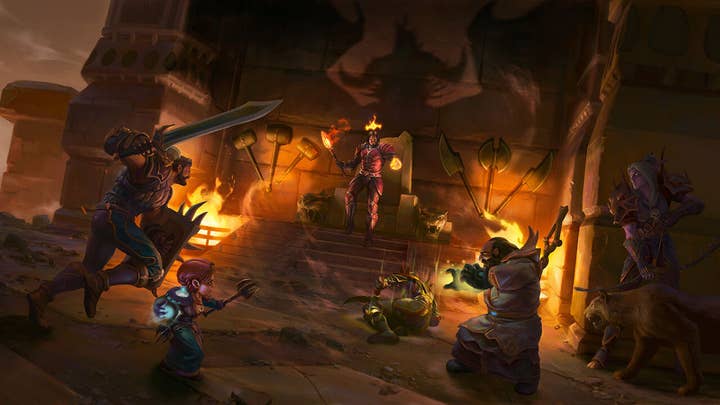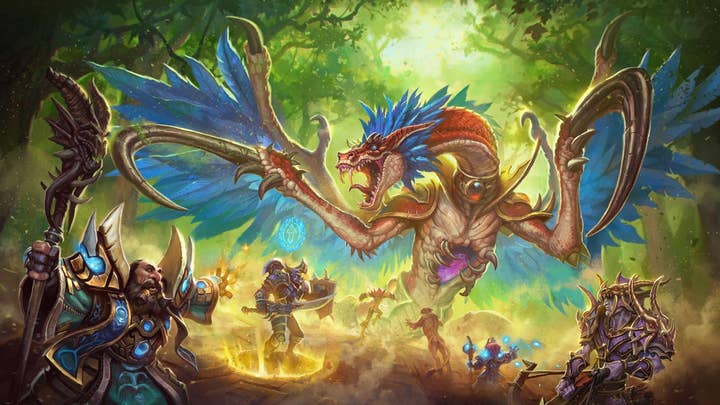How big is too big for a popular game? | Opinion
Mike Morhaime's comments on the trade-off between accessibility and engagement suggest that we don't have to accept constant user churn
Did World of Warcraft get too popular? It sounds like a ridiculous question, on the face of it -- or worse, a terribly hipster "I liked it before it was cool" kind of sentiment.
World of Warcraft is a major commercial game -- one of the most commercially successful games in history -- and without for a second discounting the creativity and artistry that has been poured into it, it is ultimately a product and a service that is designed to make money for a business and thus support the livelihoods of its creators. There doesn't seem to be a whole lot of room for the concept of "too popular" in that frame, no matter how sniffy hardcore players got about filthy casuals invading Azeroth.
That question, however, is what Blizzard founder and former president Mike Morhaime effectively alluded to in comments at the GamesBeat Summit recently, where he noted that updates to WoW aiming to make the game more accessible also had the effect of reducing the need for much social interaction, which in turn reduced players' motivation to stay engaged. His comments point to a complex and vital problem that lies at the heart of running a service-type game -- a question of "how big is too big" that's just as important from a commercial point of view as it is from a creative perspective.
What is the point where focusing on the pursuit of growth actually ends up undermining more long-term engagement?
In essence, the question here is this: what is the point where focusing on the pursuit of growth actually ends up undermining more long-term engagement, and hence commercial prospects for a game? By focusing development on pulling in wider and wider audiences, you ultimately end up with a target audience that almost by definition -- since you had to work so hard to reach it -- doesn't have the level of interest in your game that would naturally drive them to become really long-term, deeply engaged players.
This in turn creates a situation where getting new players to engage more deeply is harder and harder, since they're not inclined in that way to begin with. Pushing more resources into changes that attract yet more new players becomes an easier option -- a vicious circle at the heart of which is an acceptance, conscious or unwitting, of increasingly aggressive cycles of user churn.
A lot of games, especially in the mobile space, have approached that problem by simply embracing the concept of churn in its entirety -- building entire business models around the notion that you're always going to be turning over players, and thus spending large budgets on finding new people on a constant basis to replace those who rotate out of the game. This in itself is a huge development decision, even if it might not always be recognised as such when a game first starts down that path.
There's also some fatigue that comes with the churn, though, not just for developers but for players as well
It changes the entirety of where you focus your resources. Designing a game to be played for years by a devoted following is a completely different task from designing a game to be played for months (at best) by a constantly changing audience of short-term dip-in players. It changes the focus for content, the kinds of game systems you implement, and in free-to-play games, the sense that there's no "long game" to be played in terms of building a solid, steady relationship with players makes a huge difference to how you monetise.
In an arena as big as mobile, there's a lot of scope for that approach. There are always new players to be found when you're targeting devices with installed bases in the billions. There's also some fatigue that comes with the churn, though, not just for developers but for players as well; we can see this in the rapidly increasing costs of acquisition across the mobile sphere. It's far too early to call time on the high-churn, constant-acquisition business model for games, but it's also clear that an increasing number of players are tired of game-hopping. They're clearly not finding a lot of these experiences fulfilling, and as a result it's taking more and more marketing spend to entice them to try something new.

This brings us back around to Morhaime's comments, which hint at an alternative -- one that Blizzard may even be aiming to recapture with WoW Classic. An outline of this alternative can be summarised as, to some extent, "in praise of barriers." The very things that looked like barriers to entry to an experience like World of Warcraft also serve as a pretty strong enticement for players who overcome them to remain attached to the game and engaged for the long-term. Needing to complete content with a guild, or at least build strong social links in the game, is a pretty huge barrier for a lot of players -- especially for those with jobs and lifestyles that don't suit the regular or scheduled engagement that comes with that -- and so it's natural for developers to ponder how best to lower those barriers, mindful of how they exclude and likely alienate a large chunk of the potential audience.
Even as this kind of system pushes more casual players away, it ends up locking in a very valuable long-term audience
Yet on the flipside, there's an argument that even as this kind of system pushes more casual players away, it ends up effectively locking in a very valuable long-term audience -- players who will stick with the game through thick and thin because it's become a valuable social experience for them. This gives you a game which, properly managed, is going to generate revenue in the very long-term without the need for significant user acquisition costs being paid out constantly.
What Morhaime said pretty succinctly, though, is that you can't have your cake and eat it. Countless games over the years have promised their absolute devotion to both of these goals -- being more welcoming to a wide audience of new players while also focusing on the things that make the game rewarding for core players -- but the reality is that these can be conflicting goals. The answer isn't simply to declare one of these things virtuous and one of them heinous. I know there's an audience of core players in most games who are very keen to see all the high-end content locked away from anyone who don't have free evenings three times a week to participate in hours-long raids with static parties, and also a pretty large group of people like me who quite like MMOs but are pretty thrilled whenever fate grants us an entire hour uninterrupted to play games.
Those two groups are going to have pretty strong views on the "right" and "wrong" ways for a developer to view this, but in reality it's got to be about balance. The first step to finding that balance might be to admit that it is a balance; it's not possible to go 100% on both of these things, and while the whole affair may not be zero-sum, there are definitely trade-offs and compromises involved.
In the end, knuckling down to focus entirely on building a devoted, long-term user base with strong social links in the game isn't truly an option for everyone -- after all, not everyone is developing a game as appealing and iconic as World of Warcraft. It's worth bearing in mind, though, that this is an option and a viable model for many games, especially as we look at the acceptance of skyrocketing cost of acquisition and endless userbase churn as being standard features of the modern business. There is another way; it's just that it's a needle tricky to thread, and whose advantages are sometimes hard to see.
The phrase "a bird in the hand is worth two in the bush" became well known precisely because, for most people, the lure of the birds in the bush is indeed stronger. That is definitely true of game service operators, who almost always find the sparkly, shiny lure of user acquisition to be much more appealing than the tough, hard slog of user retention. That even a Blizzard founder is suggesting that his former company leaned too heavily on the acquisition side of the equation at some points, however, should be enough to give many people pause as they think about what "success" actually looks like for their game.

